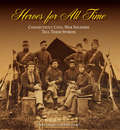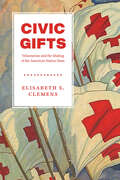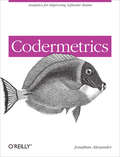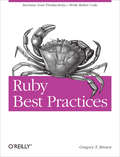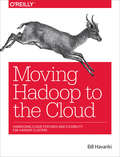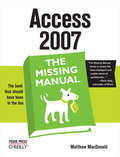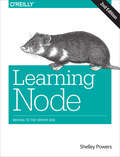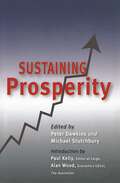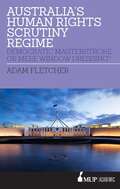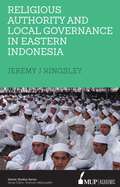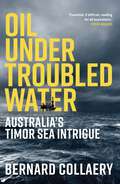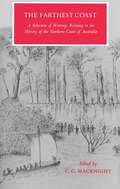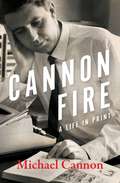- Table View
- List View
Heroes for All Time: Connecticut Civil War Soldiers Tell Their Stories (The Driftless Connecticut Series)
by Dione Longley Buck ZaidelConnecticut's Civil War history comes to life in this award-winning volume of first-hand accounts illustrated with rare period photos.Voices of Connecticut's Civil War soldiers rise from the pages of Heroes for All Time. This book presents the war straight from the minds and pens of its participants; rich passages from soldiers' letters and diaries complement hundreds of outstanding period photographs, most of which are published here for the first time. Written accounts by nurses and doctors, soldiers' families, and volunteers on the home front add intriguing details to our picture of the struggle, which claimed roughly 6,000 Connecticut lives. Rare war artifacts—a bone ring carved on the battlefield or a wad of tobacco acquired from a rebel picket—connect the reader to the men and boys who once owned them. From camp life to battle, from Virginia to Louisiana, from the opening shot at Bull Run to the cheering at Appomattox, Heroes for All Time tells the story of the war through vivid, personal portrayals.Winner of the Bruce Fraser Award
How Reason Almost Lost Its Mind: The Strange Career of Cold War Rationality
by Paul Erickson Michael D. Gordin Lorraine Daston Judy L. Klein Rebecca Lemov Thomas SturmIn the United States at the height of the Cold War, roughly between the end of World War II and the early 1980s, a new project of redefining rationality commanded the attention of sharp minds, powerful politicians, wealthy foundations, and top military brass. Its home was the human sciences—psychology, sociology, political science, and economics, among others—and its participants enlisted in an intellectual campaign to figure out what rationality should mean and how it could be deployed. How Reason Almost Lost Its Mind brings to life the people—Herbert Simon, Oskar Morgenstern, Herman Kahn, Anatol Rapoport, Thomas Schelling, and many others—and places, including the RAND Corporation, the Center for Advanced Study in the Behavioral Sciences, the Cowles Commission for Research and Economics, and the Council on Foreign Relations, that played a key role in putting forth a “Cold War rationality.” Decision makers harnessed this picture of rationality—optimizing, formal, algorithmic, and mechanical—in their quest to understand phenomena as diverse as economic transactions, biological evolution, political elections, international relations, and military strategy. The authors chronicle and illuminate what it meant to be rational in the age of nuclear brinkmanship.
An Anthropology of the Machine: Tokyo's Commuter Train Network
by Michael Fisch“An astute account of [Tokyo’s] commuter train network . . . and an intellectually stimulating invitation to rethink the interaction between humans and machines.” —Japan ForumWith its infamously packed cars and disciplined commuters, Tokyo’s commuter train network is one of the most complex technical infrastructures on Earth. In An Anthropology of the Machine, Michael Fisch provides a nuanced perspective on how Tokyo’s commuter train network embodies the lived realities of technology in our modern world. Drawing on his fine-grained knowledge of transportation, work, and everyday life in Tokyo, Fisch shows how fitting into a system that operates on the extreme edge of sustainability can take a physical and emotional toll on a community while also creating a collective way of life—one with unique limitations and possibilities.An Anthropology of the Machine is a creative ethnographic study of the culture, history, and experience of commuting in Tokyo. At the same time, it is a theoretically ambitious attempt to think through our very relationship with technology and our possible ecological futures. Fisch provides an unblinking glimpse into what it might be like to inhabit a future in which more and more of our infrastructure—and the planet itself—will have to operate beyond capacity to accommodate our ever-growing population.“Not a ‘rage against the machine’ but an urge to find new ways of coexisting with technology.” —Contemporary Japan“An extraordinary study.” —Ethnos“A fascinating in-depth account of the innovations, inventions, sacrifices, and creativity required to ensure Tokyo’s millions of commuters keep rolling. It also provides much food for thought as our transportation systems become increasingly reliant on automated technology.” —Pacific Affairs
Umm Kulthum: Artistic Agency and the Shaping of an Arab Legend, 1967–2007 (Music Culture)
by Laura LohmanHow an extraordinary woman shaped her career and legacy through war In 1967 Egypt and the Arab world suffered a devastating defeat by Israel in the Six-Day War. Though long past the age at which most singers would have retired, the sexagenarian Egyptian singer Umm Kulthum launched a multifaceted response to the defeat that not only sustained her career, but also expanded her international fame and shaped her legacy. By examining biographies, dramas, monuments, radio programming practices, and recent recordings, Laura Lohman delves into Umm Kulth m's role in fashioning her image and the conflicting ways that her image and music have been interpreted since her death in 1975.
Intimate Matters: A History of Sexuality in America
by John D'Emilio Estelle B. Freedman“Fascinating . . . chart[s] a gradual but decisive shift in the way Americans have understood sex and its meaning in their lives.” —New York Times Book ReviewThe first full length study of the history of sexuality in America, Intimate Matters offers trenchant insights into the sexual behavior of Americans, from colonial times to today. D’Emilio and Freedman give us a deeper understanding of how sexuality has dramatically influenced politics and culture throughout our history.“Intimate Matters was cited by Supreme Court Justice Anthony Kennedy when, writing for a majority of court on July 26, he and his colleagues struck down a Texas law criminalizing sodomy. The decision was widely hailed as a victory for gay rights. . . . The justice mentioned Intimate Matters specifically in the court’s decision.” —Chicago Tribune“With comprehensiveness and care . . . D’Emilio and Freedman have surveyed the sexual patterns for an entire nation across four centuries.” —Nation“Comprehensive, meticulous and intelligent.” —Washington Post Book World“This book is remarkable . . . [Intimate Matters] is bound to become the definitive survey of American sexual history for years to come.” —Roy Porter, Journal of the History of the Behavioral Sciences
Civic Gifts: Voluntarism and the Making of the American Nation-State
by Elisabeth S. ClemensIn Civic Gifts, Elisabeth S. Clemens takes a singular approach to probing the puzzle that is the United States. How, she asks, did a powerful state develop within an anti-statist political culture? How did a sense of shared nationhood develop despite the linguistic, religious, and ethnic differences among settlers and, eventually, citizens? Clemens reveals that an important piece of the answer to these questions can be found in the unexpected political uses of benevolence and philanthropy, practices of gift-giving and reciprocity that coexisted uneasily with the self-sufficient independence expected of liberal citizens Civic Gifts focuses on the power of gifts not only to mobilize communities throughout US history, but also to create new forms of solidarity among strangers. Clemens makes clear how, from the early Republic through the Second World War, reciprocity was an important tool for eliciting both the commitments and the capacities needed to face natural disasters, economic crises, and unprecedented national challenges. Encompassing a range of endeavors from the mobilized voluntarism of the Civil War, through Community Chests and the Red Cross to the FDR-driven rise of the March of Dimes, Clemens shows how voluntary efforts were repeatedly articulated with government projects. The legacy of these efforts is a state co-constituted with, as much as constrained by, civil society.
Backup & Recovery: Inexpensive Backup Solutions for Open Systems
by W. Curtis PrestonPacked with practical, freely available backup and recovery solutions for Unix, Linux, Windows, and Mac OS X systems -- as well as various databases -- this new guide is a complete overhaul of Unix Backup & Recovery by the same author, now revised and expanded with over 75% new material.Backup & Recovery starts with a complete overview of backup philosophy and design, including the basic backup utilities of tar, dump, cpio, ntbackup, ditto, and rsync. It then explains several open source backup products that automate backups using those utilities, including AMANDA, Bacula, BackupPC, rdiff-backup, and rsnapshot. Backup & Recovery then explains how to perform bare metal recovery of AIX, HP-UX, Linux, Mac OS, Solaris, VMWare, & Windows systems using freely-available utilities. The book also provides overviews of the current state of the commercial backup software and hardware market, including overviews of CDP, Data De-duplication, D2D2T, and VTL technology. Finally, it covers how to automate the backups of DB2, Exchange, MySQL, Oracle, PostgreSQL, SQL-Server, and Sybase databases - without purchasing a commercial backup product to do so.For environments of all sizes and budgets, this unique book shows you how to ensure data protection without resorting to expensive commercial solutions. You will soon learn to:Automate the backup of popular databases without a commercial utilityPerform bare metal recovery of any popular open systems platform, including your PC or laptopUtilize valuable but often unknown open source backup productsUnderstand the state of commercial backup software, including explanations of CDP and data de-duplication softwareAccess the current state of backup hardware, including Virtual Tape Libraries (VTLs)
iPhone: The Missing Manual
by David PogueAnswers found here!In iOS 7, Apple gave the iPhone the most radical makeover in its history. The new software is powerful, sleek, and a perfect companion to the iPhone 5s and 5c—but it’s wildly different. Fortunately, David Pogue is back with an expanded edition of his witty, full-color guide: the world’s most popular iPhone book.The important stuff you need to know:The iPhone 5s. This book unearths all the secrets of the newest iPhone—faster chip,dual-color flash, fingerprint scanner, and more—and its colorful companion, the 5c.The iOS 7 software. Older iPhones gain Control Center, AirDrop, iTunes Radio, free Internet phone calls, and about 197 more new features. This book covers it all.The apps. That catalog of 1,000,000 add-on programs makes the iPhone’s phone features almost secondary. Now you’ll know how to find, manage, and exploit those apps.The iPhone may be the world’s coolest computer, but it’s still a computer, with all of a computer’s complexities. iPhone: The Missing Manual is a funny, gorgeously illustrated guide to the tips, shortcuts, and workarounds that will turn you, too, into an iPhone addict.
Codermetrics: Analytics for Improving Software Teams (O'reilly Ser.)
by Jonathan AlexanderHow can you help your software team improve? This concise book introduces codermetrics, a clear and objective way to identify, analyze, and discuss the successes and failures of software engineers—not as part of a performance review, but as a way to make the team a more cohesive and productive unit.Experienced team builder Jonathan Alexander explains how codermetrics helps teams understand exactly what occurred during a project, and enables each coder to focus on specific improvements. Alexander presents a variety of simple and complex codermetrics, and teaches you how to create your own.Learn how codermetrics changes long-held assumptions and improves team dynamicsGet recommendations for integrating codermetrics into existing processesAsk the right questions to determine the type of data you need to collectUse metrics to measure individual coder skills and a team’s effectiveness over timeIdentify the contributions each coder makes to the teamAnalyze the response to your software and its features—and verify that you're meeting team and organizational goalsBuild better teams, using codermetrics to make personnel adjustments and additions
Retro Gaming Hacks: Tips & Tools for Playing the Classics
by Chris KohlerMaybe it was the recent Atari 2600 milestone anniversary that fueled nostalgia for the golden days of computer and console gaming. Every Game Boy must ponder his roots from time to time. But whatever is driving the current retro gaming craze, one thing is certain: classic games are back for a big second act, and they're being played in both old and new ways. Whether you've just been attacked by Space Invaders for the first time or you've been a Pong junkie since puberty, Chris Kohler's Retro Gaming Hacks is the indispensable new guide to playing and hacking classic games. Kohler has complied tons of how-to information on retro gaming that used to take days or weeks of web surfing to track down and sort through, and he presents it in the popular and highly readable Hacks style. Retro Gaming Hacks serves up 85 hard-nosed hacks for reviving the classic games. Want to game on an original system? Kohler shows you how to hack ancient hardware, and includes a primer for home-brewing classic software. Rather adapt today's equipment to run retro games? Kohler provides emulation techniques, complete with instructions for hacking a classic joystick that's compatible with a contemporary computer. This book also teaches readers to revive old machines for the original gaming experience: hook up an Apple II or a Commodore 64, for example, and play it like you played before. A video game journalist and author of Power Up: How Japanese Video Games Gave the World an Extra Life, Kohler has taught the history of video games at Tufts University. In Retro Gaming Hacks, he locates the convergence of classic games and contemporary software, revealing not only how to retrofit classic games for today's systems, but how to find the golden oldies hidden in contemporary programs as well. Whether you're looking to recreate the magic of a Robotron marathon or simply crave a little handheld Donkey Kong, Retro Gaming Hacks shows you how to set the way-back dial.
Ruby Best Practices: Increase Your Productivity - Write Better Code
by Gregory T BrownHow do you write truly elegant code with Ruby? Ruby Best Practices is for programmers who want to use Ruby as experienced Rubyists do. Written by the developer of the Ruby project Prawn, this concise book explains how to design beautiful APIs and domain-specific languages with Ruby, as well as how to work with functional programming ideas and techniques that can simplify your code and make you more productive. You'll learn how to write code that's readable, expressive, and much more. Ruby Best Practices will help you:Understand the secret powers unlocked by Ruby's code blocksLearn how to bend Ruby code without breaking it, such as mixing in modules on the flyDiscover the ins and outs of testing and debugging, and how to design for testabilityLearn to write faster code by keeping things simpleDevelop strategies for text processing and file management, including regular expressionsUnderstand how and why things can go wrongReduce cultural barriers by leveraging Ruby's multilingual capabilitiesThis book also offers you comprehensive chapters on driving code through tests, designing APIs, and project maintenance. Learn how to make the most of this rich, beautiful language with Ruby Best Practices.
Building Web Applications with Erlang: Working with REST and Web Sockets on Yaws
by Zachary KessinWhy choose Erlang for web applications? Discover the answer hands-on by building a simple web service with this book. If you’re an experienced web developer who knows basic Erlang, you’ll learn how to work with REST, dynamic content, web sockets, and concurrency through several examples. In the process, you’ll see first-hand that Erlang is ideal for building business-critical services.Erlang was designed for fault-tolerant, non-stop telecom systems, and building applications with it requires a large set of skills. By the end of the book, you’ll have the information you need to build a basic web service and get it running.Explore the power of Erlang and REST for building web servicesServe static and dynamic content with the Yaws web serverUse different methods for outputting data to user, such as encoding Erlang data structures into JSON or XMLBuild an application to listen for HTTP requests, process them, store data, and return useful dataGo beyond the request-response model—push data to clients with web socketsUse Erlang and Yaws to stream data from the server to a client"A book which is truly needed and will help get Erlang to the next level."—Francesco Cesarini, CEO of Erlang Solutions, author of Erlang Programming.
Moving Hadoop to the Cloud: Harnessing Cloud Features and Flexibility for Hadoop Clusters
by Bill HavankiUntil recently, Hadoop deployments existed on hardware owned and run by organizations. Now, of course, you can acquire the computing resources and network connectivity to run Hadoop clusters in the cloud. But there’s a lot more to deploying Hadoop to the public cloud than simply renting machines.This hands-on guide shows developers and systems administrators familiar with Hadoop how to install, use, and manage cloud-born clusters efficiently. You’ll learn how to architect clusters that work with cloud-provider features—not just to avoid pitfalls, but also to take full advantage of these services. You’ll also compare the Amazon, Google, and Microsoft clouds, and learn how to set up clusters in each of them.Learn how Hadoop clusters run in the cloud, the problems they can help you solve, and their potential drawbacksExamine the common concepts of cloud providers, including compute capabilities, networking and security, and storageBuild a functional Hadoop cluster on cloud infrastructure, and learn what the major providers requireExplore use cases for high availability, relational data with Hive, and complex analytics with SparkGet patterns and practices for running cloud clusters, from designing for price and security to dealing with maintenance
Access 2007: The Missing Manual (Missing Manual)
by Matthew MacDonaldCompared to industrial-strength database products such as Microsoft's SQL Server, Access is a breeze to use. It runs on PCs rather than servers and is ideal for small- to mid-sized businesses and households. But Access is still intimidating to learn. It doesn't help that each new version crammed in yet another set of features; so many, in fact, that even the pros don't know where to find them all. Access 2007 breaks this pattern with some of the most dramatic changes users have seen since Office 95. Most obvious is the thoroughly redesigned user interface, with its tabbed toolbar (or "Ribbon") that makes features easy to locate and use. The features list also includes several long-awaited changes. One thing that hasn't improved is Microsoft's documentation. To learn the ins and outs of all the features in Access 2007, Microsoft merely offers online help.Access 2007: The Missing Manual was written from the ground up for this redesigned application. You will learn how to design complete databases, maintain them, search for valuable nuggets of information, and build attractive forms for quick-and-easy data entry. You'll even delve into the black art of Access programming (including macros and Visual Basic), and pick up valuable tricks and techniques to automate common tasks -- even if you've never touched a line of code before. You will also learn all about the new prebuilt databases you can customize to fit your needs, and how the new complex data feature will simplify your life. With plenty of downloadable examples, this objective and witty book will turn an Access neophyte into a true master.
Learning Node: Moving to the Server-Side
by Shelley PowersTake your web development skills from browser to server with Node—and learn how to write fast, highly scalable network applications on this JavaScript-based platform. Updated for the latest Node Long Term Support (LTS) and Node Current (6.0) releases, this hands-on edition helps you master Node’s core fundamentals and gain experience with several built-in and contributed modules.Get up to speed on Node’s event-driven, asynchronous I/O model for developing data-intensive applications that are frequently accessed but computationally simple. If you’re comfortable working with JavaScript, this book provides many programming and deployment examples to help you take advantage of server-side development with Node.Explore the frameworks and functionality for full-stack Node developmentDive into Node’s module system and package management supportTest your application or module code on the fly with Node’s REPL consoleUse core Node modules to build web applications and an HTTP serverLearn Node’s support for networks, security, and socketsAccess operating system functionality with child processesLearn tools and techniques for Node development and productionUse Node in microcontrollers, microcomputers, and the Internet of Things
What is EPUB 3?
by Matt GarrishThis book discusses the exciting new format that is set to unleash a content revolution in the publishing world. Laden with features the printed page could never offer--such as embedded multimedia and scripted interactivity--EPUB 3 will forever change what a book can be. This article walks you through the format and puts it in its place in the digital landscape, explaining why EPUB 3 is set to become the new global standard for ebooks as it also becomes the new accessible standard for ebooks.
Sustaining Prosperity
by Peter Dawkins Michael StutchburyWhere are the new reform opportunities to ensure economic expansion? How should we face the challenges of an ageing population? How will we spread prosperity to the areas of entrenched disadvantage? These questions were the focus of the Sustaining Prosperity conference, hosted by the Melbourne Institute of Applied Economic and Social Research and The Australian in March-April 2005 at the University of Melbourne. A unique gathering of government ministers, opposition spokespeople, academic experts and business, social welfare and trade union figures debated a new national reform agenda to sustain prosperity. Participants included Federal Treasurer Peter Costello, federal Opposition Leader Kim Beazley, federal Treasury Secretary Ken Henry, economist Ross Garnaut, ACTU secretary Greg Combet and Australian Council of Social Service president Andrew McCallum. In Sustaining Prosperity, Peter Dawkins and Michael Stutchbury bring together the contributions of these and other leading Australians to examine the development of policies that will ensure a prosperous future for Australia.
Australia's Human Rights Scrutiny Regime: Democratic Masterstroke or Mere Window Dressing?
by Adam FletcherIn 2010 the Australian Government decided that it would not propose a Human Rights Act, despite the relevant recommendation of the 2008-09 National Human Rights Consultation. Instead, it introduced a Human Rights Framework comprising several measures to enhance human rights protection, including theHuman Rights (Parliamentary Scrutiny) Act 2011. The scrutiny regime under that Act was designed to ensure rights would be given due consideration before Commonwealth legislation was passed. The Act created a unique 'bipartite dialogue' system, involving a formal interchange on rights compatibility between the executive and Parliament, while excluding the courts. This set the Commonwealth apart from jurisdictions such as the ACT, Victoria, New Zealand and the UK, which have statutory rights instruments administered by their courts. The book presents a detailed study of all aspects of the scrutiny regime, and compares the regime with its closest counterparts overseas. In assessing the regime's impact, it argues that a system in which the executive and Parliament are responsible both for protecting rights and for remedying rights breaches is neither more legitimate nor more effective than one involving all three branches of government. Accordingly, it calls for strengthening reforms.
Religious Authority and Local Governance in Eastern Indonesia
by Jeremy J KingsleyReligion plays a key role in everyday affairs in Indonesia—including governance at the local, regional and national level. This book investigates the local governance landscape of the world's largest Muslim majority state, Indonesia, by providing a detailed account of local communities and religious authority on the eastern Indonesian island of Lombok—one of the nation's most pious areas. In particular, this book considers the interaction of state and non-state actors and institutions and how these institutions are interwoven into a fabric of governance. Through an ethnographic case study of an Islamic boarding school, Darul Falah, and the community committed to it, this book trains its focus upon local Muslim religious leaders (Tuan Guru) who are central to local governance. Drawing upon the notion of the fabric of governance, this book shows how governance is woven from multiple strands, which are made up of a combination of institutions, rules and actors to be interpreted within dynamic social, legal and political processes. In doing so, this book employs a new means to theorise governance frameworks and understand how religion and governance are tightly intertwined. Religious Authority and Local Governance in Eastern Indonesia seeks to re-orient discussions of Indonesian political and legal affairs from the ground up and use local governance as a means to speak to larger social, legal and political issues. Islamic Studies Series - Volume 25
Henry Handel Richardson Vol 3: 1934-1946
by Edited By SteeleThe publication of Henry Handel Richardson's correspondence is a major event in Australian scholarly publishing. There are approximately fifteen hundred unpublished manuscript letters to and from HHR, of which almost a thousand are in her own hand. They form a correspondence between Australia, England, Germany, Italy and the USA over a seventy-year period, 1874 to 1946. The letters shed new light on Henry Handel Richardson's biography, her artistic methods, her personal life, her friendships (and antagonisms), her response to Australian readers and to expatriation, and her rigorous efforts to maintain a literary life apart from her personal life. The collection begins with HHR's earliest letter, then traces her student days in Leipzig, the publication of Maurice Guest, The Getting of Wisdom, The Fortunes of Richard Mahony, The Young Cosima and The End of a Childhood, and her struggle late in life with the stringencies of wartime England. In this volume the widowed HHR moves to the Sussex village where she lived until her death. The letters cover the publication of The End of a Childhood and Other Stories, the ill-fated The Young Cosima and her incomplete memoir Myself When Young. War dominated the closing years of her life, and she reported her experiences graphically to Mary Kernot. She refused to leave her house, even while the Battle of Britain was being fought in the skies above her. The strain and deprivations of war weakened her. When unable to write, her companion and secretary Olga Roncoroni wrote for her, and these letters are included. Her last letter is a little pencilled note to Mary Kernot.
Oil Under Troubled Water: Australia's Timor Sea Intrigue
by Bernard CollaeryIn May 2018 Bernard Collaery, a former Attorney-General of the Australian Capital Territory and long-term legal counsel to the government of East Timor, was charged by the Australian Commonwealth Director of Public Prosecutions with conspiracy to breach the Intelligence Services Act 2001. He was forbidden from talking about the charges against him, but under parliamentary privilege independent MP Andrew Wilkie revealed what has since been described as 'Australian politics' biggest scandal'. Five years earlier, after ASIO officers raided Collaery's home and office, Collaery told journalists that ASIS had been bugging the East Timorese government during negotiations over Timor Sea oil. He was about to represent East Timor; as well as calling the evidence of a former senior ASIS agent known publicly only as Witness K, at The Hague in a case against the Australian government. Oil Under Troubled Water relates the sordid history of Australian government dealings with East Timor, and how the actions of both major political parties have enriched Australia and its corporate allies at the expense of its tiny neighbour and wartime ally, one of the poorest nations in the world.
Torch the Place: MTC NEXTSTAGE ORIGINAL
by Benjamin LawTeresa's mum finds it impossible to let anything go-from grudges to household objects. She thinks of her home as a museum full of irreplaceable treasures. But she's not really a curator, she's a hoarder, and her house is enough to give Marie Kondo heart palpitations. When her kids return home to celebrate her 60th birthday, she's over the moon to have the family back together. But this isn't a reunion. It's an intervention. Celebrated writer Benjamin Law is one of this country's brightest literary stars. For his hysterically funny and moving stage premiere, Law employs his effortless self-deprecating wit to spark joy in the clutter and find truth in those crazy moments that bring families closer together. Commissioned through MTC's NEXT STAGE Writers' Program with the support of our Playwrights Giving Circle Donors, The Ian Potter Foundation, Naomi Milgrom Foundation, The Myer Foundation, Malcolm Robertson Foundation and The University of Melbourne.
Menzies Watershed: Liberalism, Anti-communism, Continuities 1943–1954
by Zachary GormanThe eleven years that passed between the 1943 and the 1954 elections were arguably some of the most pivotal in Australian history. This was a period of intense political, policy and strategic transition, which saw a popular Labor Government and its state-led vision for post-war reconstruction toppled by Robert Menzies and his newly formed political machine, the Liberal Party of Australia. Meanwhile, a backdrop of rising Cold War tensions came to dominate domestic and international policymaking, ushering in a divisive communist party ban, the ANZUS treaty, the Colombo Plan, and Australia's own agency of international espionage, ASIS. But what was the difference in practical terms between Menzies and his predecessors? What role was the state to play under a centre-right government, and would Menzies be able to live up to the liberal ideals with which he had won over the Australian public? All these issues are explored in the second of a four-volume history of Menzies and his world, based on conferences convened by the Robert Menzies Institute at the University of Melbourne. Contributors include Christopher Beer, Andrew Blyth, Troy Bramston, Lorraine Finlay, Nicolle Flint, David Furse-Roberts, Anne Henderson, David Lee, Lucas McLennan, Lyndon Megarrity, Charles Richardson, William Stoltz and Tom Switzer.
Farthest Coast: A Selection of Writings Relating to the History of the Northern Coast of Australia
by Campbell MacknightNorthern Australia was once one the most remote areas of the world. To all its early visitors—Macassan fishermen, white explorers, soldiers, government officials, settlers and missionaries—it was their farthest coast. For all it was an alien and difficult place to reach.Campbell Macknight outlines the history of the exploration and settlement of the coast from the Gulf of Carpentaria west to the Kimberleys in his introduction. He suggest it is a geographical unit very different from the rest of Australia.His selections from the writings of early visitors are exciting and interesting for their own sakes, and an invaluable guide to a region of growing economic and strategic importance.
Cannon Fire: A Life in Print
by Michael CannonMichael Cannon is best known as the author of landmark and popular works of Australian history, including The Land Boomers (1966), and as the founding editor of Historical Records of Victoria. But Cannon, the child and grandchild of important figures in Australian independent journalism, developed a fascination with print media early in his life and had a long and colourful career in printing, publishing and editing books, newspapers and magazines. In Cannon Fire he brings to life many notable personalities with whom he worked, including Keith and Rupert Murdoch, and recreates the ink-stained, cigarette-smoke-filled and always well-lubricated worlds of publishing across Melbourne and Sydney in the second half of the twentieth century. More than this, Cannon's intimate account of a life that began in the 1920s fascinates as both a personal story of unusual courage in the face of challenge and heartache, and as a tale of times now passing from memory.
